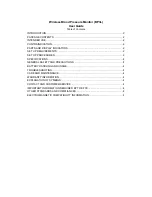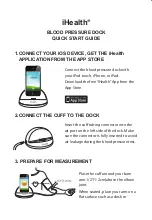
Keep in mind that tire pressures will increase as you drive.
When tires are in motion, the sidewalls are under stress
carrying the load of the vehicle. This energy created by the
tires develops heat, which causes the air in the tires to expand.
This can cause air pressure to increase as much as 10 psi in
certain applications. This is normal, and the manufacturers'
recommended cold running pressures have already taken this into consideration. Always adjust
air pressure when tires are cold or ambient to the baseline pressures that were programmed into
the monitor for each wheel position. Cool temperatures and high altitudes can cause tires to lose
pressure. If a tire is close to its low-pressure level, an alert can be sounded when pressure drops
overnight due to cooler temperatures. Inflate to proper level in the morning. If sensors have not
been programmed to the monitor, or signals received by the monitor after first installed the screen
will display
NSP
(
see Figure 3-3
).
III. INSTALLING THE SENSORS ON THE VEHICLE
15
Figure 3-3
1. If the sensors have been programmed to the monitor you will now need to install the
sensors onto the proper wheel positions on the vehicle.
The sensor should be tightened only by hand, not with a tool.
Use a firm grip
and tighten the sensor. Check for leaks with a soapy solution. The monitor will
begin to receive and recognize the sensors, and it will display the wheel positions as they
are received on the screen.
2. When all the sensors that have been programmed
to the monitor are received and within the baseline
air pressure parameters, the display will show all the
wheel positions that were programmed, the word
ON
will be displayed, on the screen,
and the green LED light will come on (
see Figure 3-
4
). You are now ready to enjoy the safety and comfort of your new Doran 360RV Tire
Pressure Monitor System.
3. If any of the wheel positions are not within the baseline air pressures an alert will be
issued by the monitor and the air pressure reading will be shown for the affected tire
position and the monitor will show PRESSURE and whether it is a LOW or HIGH
warning. The audible alarm will be heard (see Section IV for further details about alarms).
Figure 3-4














































